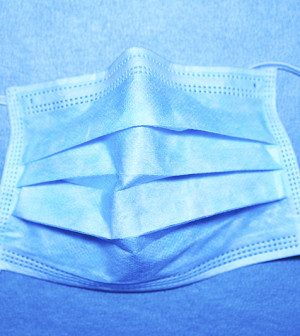- Navigating Your Midlife Crisis: Embracing New Possibilities
- City Raccoons Showing Signs of Domestication
- Mapping the Exposome: Science Broadens Focus to Environmental Disease Triggers
- One Week Less on Social Media Linked to Better Mental Health
- Your Brain Changes in Stages as You Age, Study Finds
- Some Suicide Victims Show No Typical Warning Signs, Study Finds
- ByHeart Formula Faces Lawsuits After Babies Sickened With Botulism
- Switch to Vegan Diet Could Cut Your Greenhouse Gas Emissions in Half
- Regular Bedtime Does Wonders for Blood Pressure
- Dining Alone Could Mean Worse Nutrition for Seniors
Nurses’ ‘Scrubs’ Pick Up Bad Hospital Germs

The “scrubs” of intensive care unit (ICU) nurses often pick up disease-causing germs, including those resistant to antibiotics, a new study reports.
“We know there are bad germs in hospitals, but we’re just beginning to understand how they are spread,” said study lead author Dr. Deverick Anderson, an associate professor of medicine at Duke University School of Medicine in Durham, N.C.
These bad germs spread from patients to the nurses’ uniforms (usually the sleeves and pockets) and objects around the room, most often to bed railings, the researchers found.
“This study is a good wake-up call that health care personnel need to concentrate on the idea that the health care environment can be contaminated,” said Anderson.
“Any type of patient care, or even just entry into a room where care is provided, truly should be considered a chance for interacting with organisms that can cause disease,” he added in a university news release.
The study included 40 intensive care unit nurses at Duke University Hospital. Samples were collected from their scrubs before and after each 12-hour shift. Samples were also collected from all the patients the nurses cared for and items in the patients’ rooms.
The researchers focused on five pathogens known to cause hard-to-treat infections, including an antibiotic-resistant superbug called methicillin-resistant Staphylococcus aureus (MRSA).
The study found 22 instances when at least one of the five germs was transmitted from the patient or the room to a nurse’s scrubs. In six incidents, the germs spread from patient to nurse and room to nurse, and in 10 instances, bacteria was transmitted from the patient to the room.
There were no nurse-to-patient or nurse-to-room transmissions, according to the findings.
The study is scheduled for presentation in New Orleans Thursday at ID Week, the annual meeting of the Infectious Diseases Society of America, the Society for Healthcare Epidemiology of America, the HIV Medicine Association, and the Pediatric Infectious Diseases Society.
“I think sometimes there’s the misconception that if, for instance, a nurse is just talking to patients and not actually touching them, that it might be OK to skip protocols that help reduce pathogen transmission, like washing hands or wearing gloves,” Anderson said.
“The study’s results demonstrate the need for caution whenever health care providers enter a patient room, regardless of the task they’re completing,” he added.
Anderson noted that previous studies focused mainly on the patient-nurse connection, while this one showed that a patient’s room also poses a threat.
“Our study shows following prevention strategies has to be a top priority, and that health care providers should be looking for ways to improve the likelihood that they are,” he concluded.
Data and conclusions presented at meetings are usually considered preliminary until published in a peer-reviewed medical journal.
More information
The U.S. Centers for Disease Control and Prevention has more on health care-associated infections.
Source: HealthDay
Copyright © 2025 HealthDay. All rights reserved.










